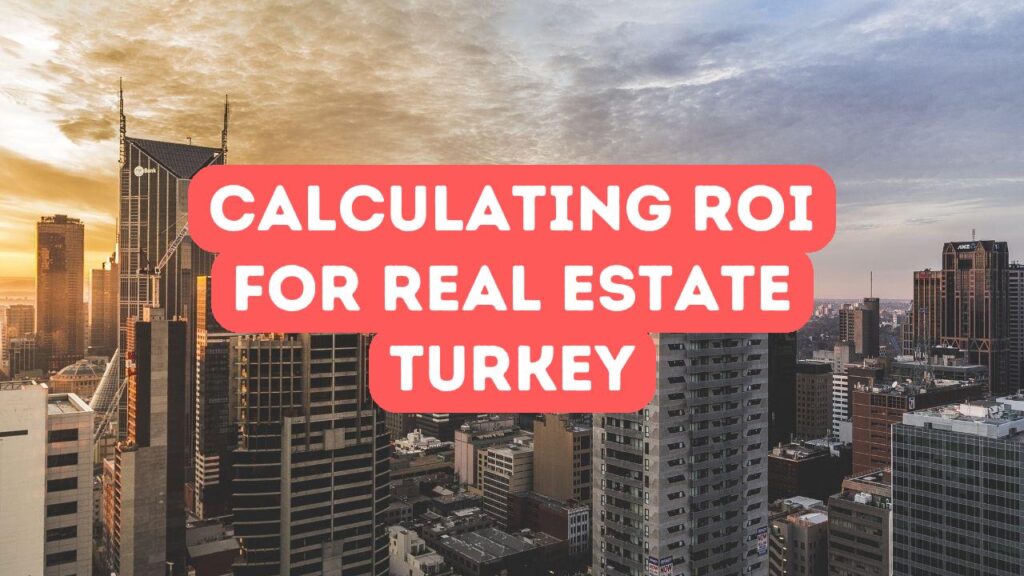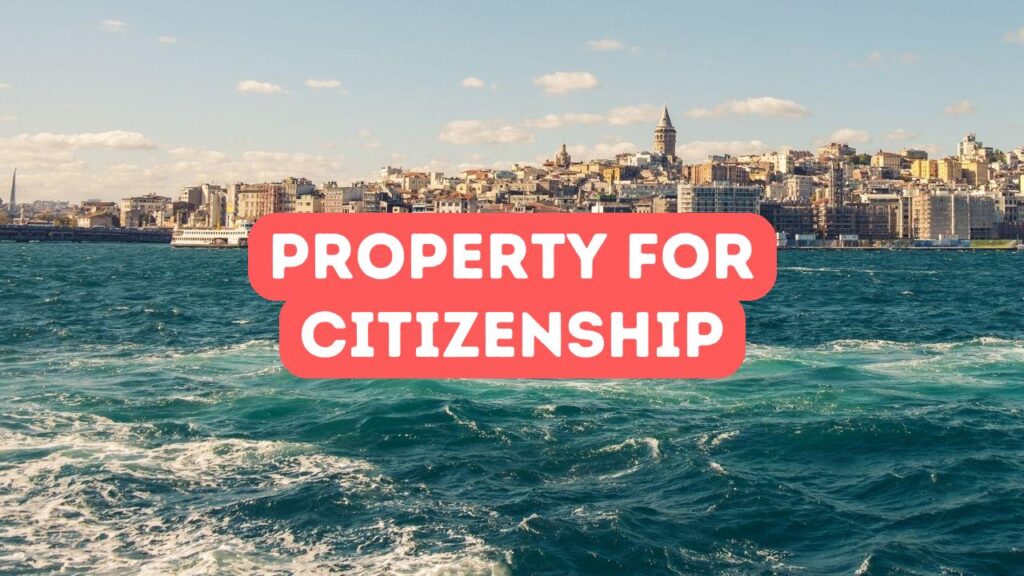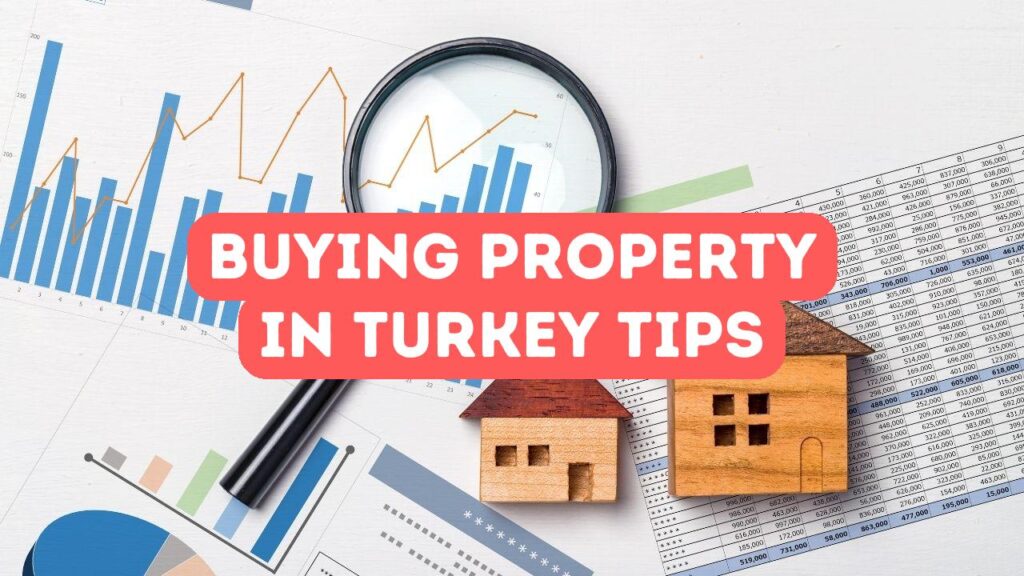Calculating ROI for Turkish real estate investments can seem like unraveling a complex puzzle. Yet, understanding the ROI Turkish real estate offers is crucial for making wise investment choices. The Turkish property market, with its unique blend of history and booming development, holds promise for investors. But how do you accurately calculate ROI? It’s not just about tallying numbers. You need to dive into the intricacies of real estate investments within this vibrant market. The process involves knowing property costs, anticipated rental income, and potential appreciation. Getting a grip on investment return calculation helps in assessing profitability. Imagine uncovering hidden gems in Istanbul or coastal treasures along the Aegean. With this guide, calculating ROI becomes a powerful tool. You open the door to informed decisions, turning complex calculations into stepping stones toward financial success. Ready to break down the numbers and boost your investment confidence? Let’s explore together.
Understanding the Components of ROI in Real Estate
In the world of real estate investments, grasping the components that make up ROI is vital. The Turkish property market is brimming with potential, but understanding its nuances is key to calculating ROI accurately. So, what are the critical elements? Start by examining property purchase costs, a fundamental piece of the puzzle. Next, consider the anticipated rental income, which often serves as the bread and butter of investment returns. Don’t overlook potential appreciation, either—especially in areas undergoing rapid development. Turkish real estate can offer diverse opportunities, from striking cityscapes to tranquil coastal regions. Each aspect contributes to the overall investment return calculation, creating a full picture of ROI. With every component on your radar, from costs to income, you’re better equipped to navigate the rich landscape of Turkish real estate investments. Pulse check: are you following? Great—because you’re on your way to unlocking ROI’s full potential in the Turkish market.
Estimating the ROI for Turkish real estate isn’t just an exercise in numbers; it’s a dance with details in the Turkish property market. Start by diving deep into acquisition costs, covering not just the purchase price, but taxes and fees too. Next, shift your gaze to the realm of rental income. How do you calculate ROI effectively? By building a reliable projection of cash flow, considering factors like location and tenant demand. Then, look to the future—consider potential appreciation, especially where urban renewal sparks growth. This step connects today’s investment with tomorrow’s gains, illuminating the path of real estate investments. Are you seeing the pattern? Through methodical steps, investment return calculation becomes clearer. Remember, in Turkish real estate, the components of ROI intertwine like a tapestry, needing careful study to grasp the complete picture. Keep these elements at your fingertips; they form the bedrock to calculate ROI in the vibrant Turkish market.
To truly understand the components of ROI in real estate, one must appreciate the delicate balance of factors influencing the Turkish property market. Begin with the essential building blocks: the cost of property acquisition and associated fees. Picture these as the roots anchoring your real estate investment. Next, factor in expected rental income, your monthly heartbeat ensuring cash flow. It’s this steady stream that keeps the investment thriving. Consider the potential for property appreciation—where your foresight meets opportunity in the investment return calculation. Each element, from purchase costs to income and appreciation, intertwines to create a seamless ROI tapestry. But remember, these elements don’t exist in isolation. They work together, forming a dance that requires constant attention to the market’s rhythm. Are you feeling the tempo? Once you grasp these components, calculating ROI becomes second nature, guiding you through the intricate world of Turkish real estate investments.
Key Metrics for Evaluating Turkish Market Returns
Evaluating the Turkish property market demands a keen eye for specific metrics. First off, scrutinize the purchase price. It’s the cornerstone of the ROI Turkish real estate calculation. Then, factor in rental yield, a measure of how much income the property generates versus its cost. Calculate ROI by subtracting expenses like maintenance and taxes from rental income. Consider property appreciation, the increase in value over time, which bolsters your real estate investments. Don’t overlook occupancy rates; they signal potential income stability. Pinpoint these figures, and you hold the key to understanding your investment return calculation in the Turkish market. By juggling these numbers, you paint a clearer picture of potential returns. In this rapidly evolving market, staying informed on these metrics is akin to having a compass guiding your investment journey. After all, knowledge isn’t just power; it’s profit.
Understanding the key metrics is essential for calculating ROI in the Turkish property market. Amid this bustling arena, net income stands as a significant player. This refers to actual income from a property after subtracting expenses. Efficient real estate investments demand attention to detail here. Equally important is knowing the cap rate, a ratio that aids in gauging investment return calculation. Remember your leverage; the more efficiently you use borrowed funds, the better your ROI in Turkish real estate. Additionally, monitor market trends closely. Demand fluctuations in the Turkish property market can impact returns significantly. It’s like riding a wave; timing and technique are everything. Neglecting these metrics might leave you adrift. So equip yourself with data and steer your investments wisely. The Turkish market offers vast potential, but only calculated moves yield rich dividends. Ready your analytical tools and set sail on this promising investment voyage.
Navigating the Turkish property market requires a sharp focus on understanding metrics for calculating ROI. Dive into cash flow analysis, which provides a lens into the liquidity of your real estate investments. This factor highlights the net cash generated, helping pinpoint the ROI Turkish real estate offers. Evaluate debt service coverage ratios meticulously to illuminate how well your income covers debt repayments. It’s this coverage ratio that serves as a barometer for investment security. Keep an eye on GDP growth as a wider economic indicator that reciprocally affects the Turkish property market’s vigor. Consider these metrics as the north star in your journey of investment return calculation. With these instruments in your toolkit, calculate ROI with more precision and confidence. By acing the metric game, you transform numbers into insights, insights into decisions, and decisions into fruitful investments. Set forth with this knowledge to harness the market’s opportunities.
Risks and Considerations in Calculating ROI
Understanding the risks and considerations when calculating ROI in Turkish real estate is like navigating a maze without a map. The Turkish property market offers tempting opportunities, yet it’s essential to tread carefully. From fluctuating currency values to shifting market demands, investors face multiple challenges. Calculating ROI isn’t just about the numbers; it’s about considering factors like legal regulations, property location, and economic trends. A minor oversight here could lead to significant financial setbacks. Imagine investing in a promising neighborhood that suddenly loses its charm—knowing these nuances is crucial. Anticipated rental income, for instance, might fall short if tourist numbers dip. Moreover, costs associated with property maintenance and taxes can chip away at expected profits. By understanding these risks, you can fine-tune your investment return calculations, ensuring your ROI is reliable and robust. This knowledge turns you into a savvy investor, ready to make the most of the Turkish real estate landscape.
Another consideration when calculating ROI in Turkish real estate is the local real estate regulations that can impact profitability. The Turkish property market, while promising, is subject to laws that can change with little warning. Being aware of such legal landscapes can be the difference between a successful investment and a financial misstep. Consider a scenario where property taxes rise unexpectedly, skewing your investment return calculations. Understanding these regulatory elements can save investors from unforeseen pitfalls. Don’t forget environmental and zoning laws, which could affect developments in key areas. Many have discovered too late that their anticipated rental income was dashed by strict zoning restrictions. Another risk to consider is the potential for natural disasters, which would lead to additional insurance requirements and premiums. Smart real estate investments involve weighing these factors, ensuring calculated risks align with potential rewards. This careful consideration will fortify your strategy in the diverse and dynamic Turkish property market.
In diving into the world of ROI Turkish real estate, we can’t overlook the economic and political climate’s impact on investment return calculations. Political shifts and economic instability can send ripples through the Turkish property market, altering expected returns. Imagine a sudden policy change that affects foreign ownership regulations, reshaping your real estate investment strategy overnight. Investors must remain agile, keeping an eagle eye on both national and local developments. Global economic trends also play a role, as shifts in international markets can influence local real estate dynamics. Consider the implications of currency fluctuations on ROI—an unexpected devaluation could cut into profits significantly. To calculate ROI effectively, these broader contexts must be stitched into your financial canvas, crafting a comprehensive view that captures potential risks and rewards. By staying informed and adaptable, you fortify your strategy, making calculated moves in the vibrant tapestry of Turkish real estate investments.






